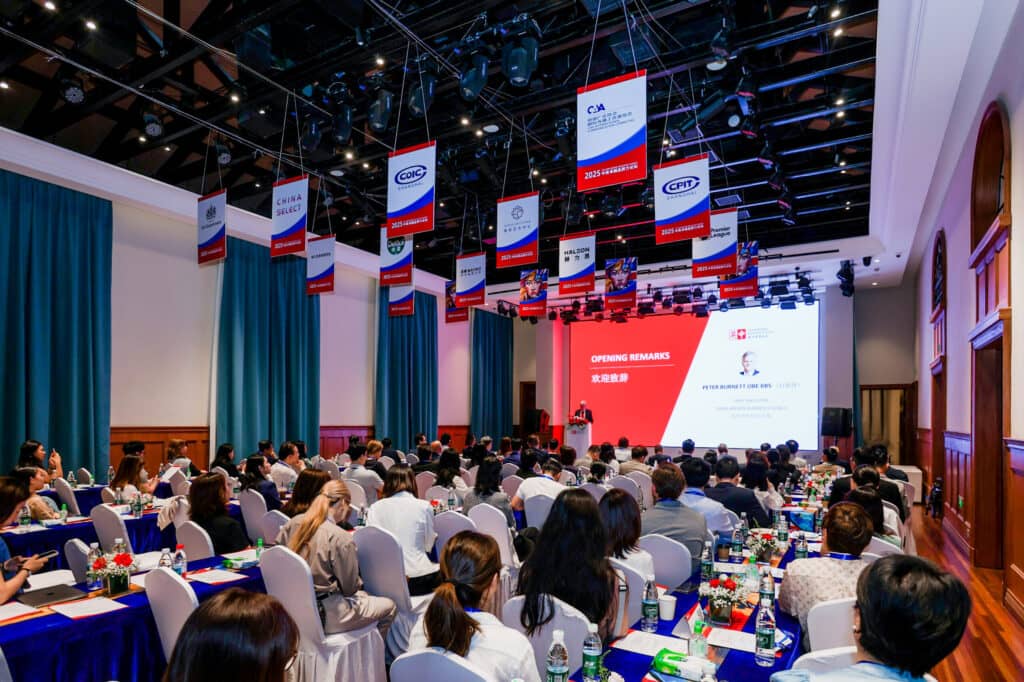‘Think Local, Act Global’: Insights from the 2025 UK-China Brand Excellence Summit
By
Huiyan Chen

Published on
May 27, 2025

As China reaches the midpoint of 2025, the country’s consumer market has settled into a “new normal” of single-digit growth. Yet, on the global stage, China’s potential remains firmly in sight. For international brands, the race for relevance in this complex market is far from over.
On May 21, the China-Britain Business Council brought its flagship consumer summit to Shanghai with the debut of the UK–China Brand Excellence Summit at Hengfu Art Center. As a sister event to the Council’s signature China Consumer forum in London, the gathering attracted around 140 distinguished attendees, including senior leaders from Chinese and British consumer brands, prominent trade associations, and government representatives.
Peter Burnett, Chief Executive of the China-Britain Business Council, emphasized at the start of the event that the Chinese market is a crucial part of global expansion for British businesses. “For any strong and mature brand aiming to truly go global, building brand awareness and recognition in China is essential. This requires intelligence, endurance, creativity, and a spirit of collaboration—but there’s no doubt that the Chinese market cannot be overlooked.”

But as local competitors rise and Chinese consumers become increasingly discerning, the rules of engagement for foreign players are shifting. How can brands forge more resilient and resonant ties with this evolving landscape?
This was the focus of the event’s flagship panel—“Think Local, Act Global: Tapping into China’s Unique Cultural DNA”—which brought together voices from across beauty, mobility, and media. Moderated by Ran Guo, Director of Consumer Economy at CBBC, the panel brought together Agnes Wu, Editorial Director of Jingzhi Media Group; Andy Duan, Managing Director for Brompton China at British bicycle maker Brompton. Each offered nuanced observations and practical insights from the frontlines.
From Material Aspiration to Cultural Identification
“Today’s Chinese consumers are no longer just seeking material status symbols—they’re prioritizing emotional, cultural, and value-based connections,” said Agnes Wu. She noted that this deeper shift in mindset is a key reason why niche and culturally anchored brands have gained remarkable traction in recent years.
British bike brand Brompton, founded in 1975 and introduced to China in 2012, is a case in point. Despite the sizable potential of China’s bicycle market, the challenge has never simply been about selling more bikes.
“Our real challenge,” said Duan, “is not to sell more bicycles, but to sell a different kind of value.” With its origins in solving London’s commuting woes, the bike was designed as a “magic carpet”—a vehicle that, once unfolded, could take you anywhere. Today, that narrative of elegant engineering and urban exploration has struck a chord with China’s middle-class consumers, transforming Brompton into a lifestyle symbol rather than a mere transport solution.

From “In China” to “For China”
As domestic aesthetics grow more confident and local players continue to rise, Chinese consumers now demand not just tailored offerings—but brand philosophies that originate from within their lived experience.
Brompton’s Duan echoed the same priority. “We never see ourselves as a foreign brand. We aim to be participants in local culture,” he said. That philosophy is embedded in annual user research and a grassroots riding community anchored in cities like Beijing and Shanghai. “We don’t stand outside looking in. We tell stories with Chinese users.”
Consumer behavior also informs product iteration. “Five years ago, 80 percent of our users were male,” Duan noted. “But in recent years, female users have surged and are now close to 50 percent. That’s driven a lot of changes in design and color strategy.”
At a macro level, brands must now discard legacy frameworks and confront a changed cultural and emotional landscape.
“The traditional Western lens of luxury no longer applies here,” Wu observed. “Chinese consumers’ aspirations and emotional needs have fundamentally shifted over the past few years.” That insight has driven Jingzhi Media’s continued focus on the concept of “jingzhi (精致)”—not just in product, but in narrative and experience—and developed the Jingzhi Success Framework to decode China’s evolving luxury landscape.
In an era where globalization is no longer an automatic advantage, locality has become the critical lever. For international brands looking to build lasting resonance in China, the mandate is clear: To think local is no longer optional. To act global, it must start at home.












